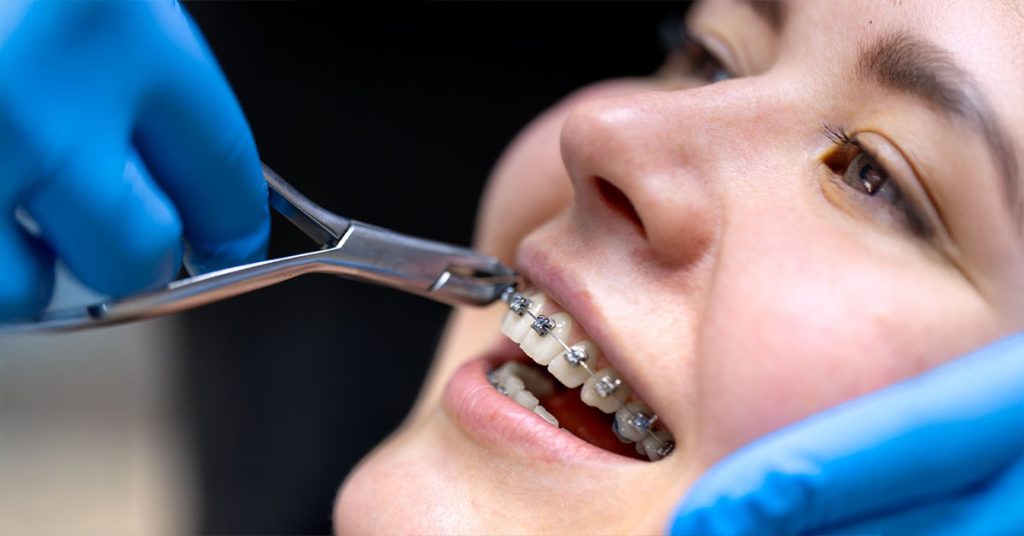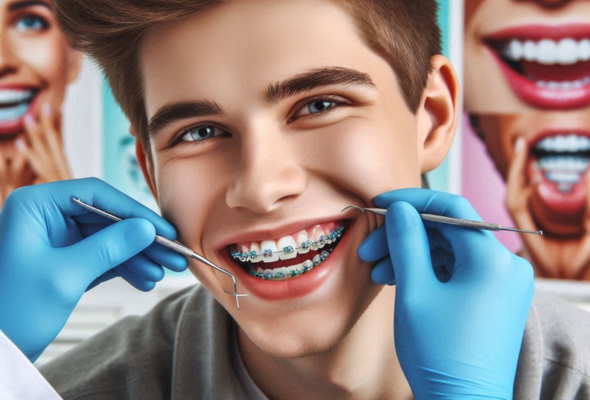Orthodontic Retreatment with Micro-Implants: A Modern Solution for Relapsed Teeth
Blogs Orthodontic Retreatment with Micro-Implants: A Modern Solution for Relapsed Teeth Introduction. Relapsed teeth after orthodontic treatment are more common than many people think. Even after wearing braces or clear aligners, teeth can slowly shift back to their original position due to factors like genetics, aging, or inconsistent retainer use. For patients who have experienced this setback, orthodontic retreatment can feel like starting over, but thanks to micro-implants (TADs), orthodontic retreatments in Kochi are now faster, more precise, and more comfortable than ever. This blog explores how micro-implants are revolutionizing orthodontic retreatment, making it a reliable solution for relapsed teeth. Table of Contents What Are Relapsed Teeth Challenges of Traditional Orthodontic Retreatment What Are Micro-Implants (TADs) How Micro-Implants Help in Orthodontic Retreatment Advantages of This Retreatment Approach Step-by-Step Retreatment Process Who Is a Good Candidate How Long Does It Take Conclusion FAQs What Are Relapsed Teeth? Relapsed teeth are teeth that have moved out of their corrected position after previous orthodontic treatment. Common causes include: Not wearing retainers as prescribed Natural changes in bite and jaw shape over time Tooth loss or gum problems Genetic predisposition to crowding Challenges of Traditional Orthodontic Retreatment Before micro-implants, retreatment often required: Wearing braces again for long periods Uncomfortable headgear or bulky appliances Limited control over tooth movement, especially in severe cases This often discouraged patients from pursuing retreatment despite wanting a better smile. What Are Micro-Implants (TADs)? Micro-implants, also called Temporary Anchorage Devices (TADs), are tiny screws that are placed in the jawbone to serve as stable anchor points. They are: Minimally invasive Painless to place (done under local anesthesia) Easily removed after treatment They allow orthodontists to move teeth with more precision and efficiency compared to traditional methods. For patients seeking advanced orthodontic treatment in Kerala, micro-implants provide a modern, precise, and comfortable solution for tooth correction. How Micro-Implants Help in Orthodontic Retreatment Distalization of Posterior Teeth –Micro-implants are strategically placed in the maxillary arch to gently move the molars backward.This process creates the necessary space to retract protruded front teeth without the need for premolar extractions. In many cases, wisdom teeth may be removed to provide adequate room for effective distalization Retraction of Protruded Front TeethAfter space has been created, controlled forces are applied to move the front teeth backward. This retraction improves lip posture, reduces excessive overjet, and results in a more balanced and attractive facial profile. Intrusion for Gummy Smile CorrectionWhen the upper front teeth show too much gum, micro-implants can be used to gently intrude the incisors. This reduces excessive gum display and enhances the overall smile aesthetics. Improvement of Jaw & Facial Profile By precisely repositioning the teeth, orthodontic retreatment with micro-implants helps achieve a harmonious jaw alignment and a more balanced facial appearance. Micro-implants offer a powerful, minimally invasive solution for orthodontic retreatment in Kerala, especially for adult cases, helping avoid extractions, shorten treatment time, and deliver stable, long-term aesthetic results. Advantages of This Retreatment Approach No need for Premolar Removal – Only wisdom teeth may require removal More control of tooth movement – TADs are less invasive and highly effective. Improved smiles and facial balance; helps to improve protrusion, gummy smile, and excess visibility of anterior teeth Stable and long-lasting results: Ensures better retention and less relapse, making it an excellent choice for orthodontic retreatment in Ernakulam. Step-by-Step Retreatment Process Consultation & Assessment – Your orthodontist evaluates your relapse with X-rays and scans. Treatment Planning – A personalized plan is created, often combining braces with micro-implants. Placement of Micro-Implants – Quick, painless procedure done chairside. Tooth Movement Phase – Braces work with the TADs to shift teeth efficiently. Monitoring Progress – Visits to ensure everything moves as planned. Retainer Phase – After treatment, a new retainer is provided to maintain results. Who Is a Good Candidate? You may be a good candidate for orthodontic retreatment with micro-implants if: Your teeth have shifted significantly after braces You have gaps, crowding, or bite issues that need precise correction You want faster and more predictable results Who Is a Good Candidate? Treatment time depends on the severity of relapse. With micro-implants, many patients complete retreatment in 6–12 months, compared to longer timelines with traditional methods. Thinking about fixing your relapsed teeth?📞 Call us now Call Us Now Conclusion Orthodontic retreatment doesn’t have to be a frustrating or lengthy process. With micro-implants, you can achieve precise tooth movement, faster results, and long-term stability. Whether your relapse is mild or severe, this modern solution makes it easier than ever to reclaim the smile you worked hard to achieve. Frequently Asked Questions Are micro-implants painful? No. Placement is carried out using local anesthesia, so you should expect to feel a slight pressure. Soreness after placement usually lasts for a day or two. Do micro-implants last forever? No. Micro-implants are temporary devices used until your teeth have moved when you need them. How do I take care of micro-implants while in treatment? Keep good oral hygiene. Brush gently around the implanted area and follow your orthodontist’s cleaning instructions to prevent irritation or infection.
Orthodontic Retreatment with Micro-Implants: A Modern Solution for Relapsed Teeth Read More »


